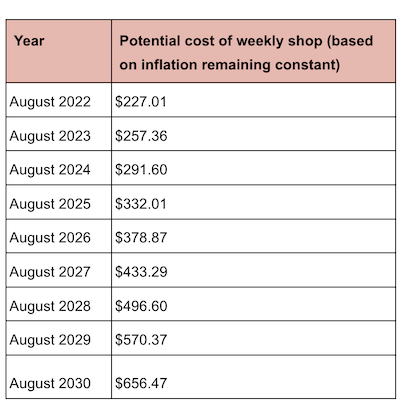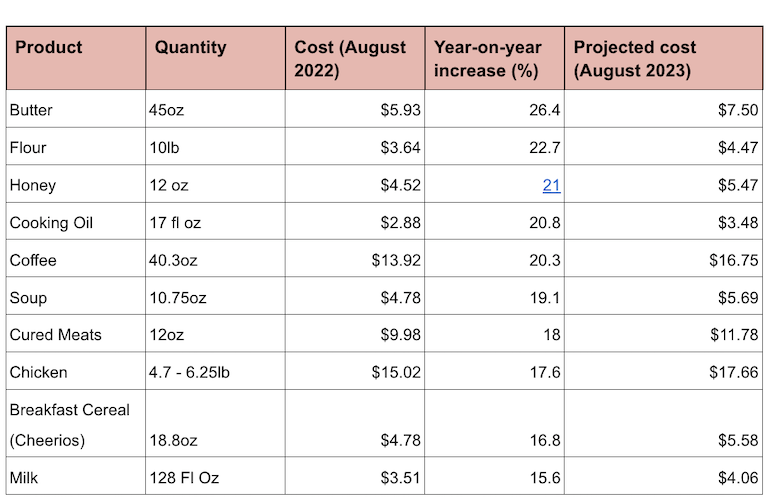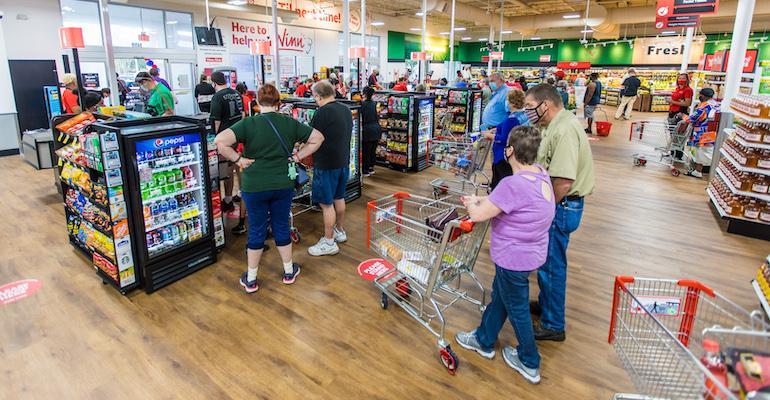Most U.S. consumers would say grocery prices are high enough already, but new research by food sensitivity test specialist YorkTest indicates they may get worse.
An analysis by United Kingdom-based YorkTest, released Wednesday, projects that the average weekly shop for a family of four will jump from $227 today to more than $300 by the end of 2024, reaching a staggering $656.47 in 2030 if inflation continues at its current rate.
 The price climb reflects an annual average rise of 13%, according to YorkTest’s U.S. grocery price study (see chart at left), which compared the price changes in grocery products using the Consumer Price Index (CPI).
The price climb reflects an annual average rise of 13%, according to YorkTest’s U.S. grocery price study (see chart at left), which compared the price changes in grocery products using the Consumer Price Index (CPI).
Which product is the worst culprit? YorkTest’s research indicates butter is driving up average grocery bills the most, and milk and yogurt aren’t far behind. A 45-ounce pack of butter rose by 26% to $5.93 during the past year, and the potential cost would be $7.50 in 2023. Milk and yogurt are expected to go from $3.51 to $4.06, and $4.46 to $5.12, respectively.
“We all hope that the measures the Federal Reserve is taking to curb inflation will work so we won’t see the cost of groceries rise to the levels shown in our research,” commented Kerri Ferraioli, nutritionist at YorkTest, based in York, England. “However, the price rises we’ve seen in the past year is putting pressure on households already struggling to pay the bills. Our shopping basket contained essential items that are difficult to cut back on.”
YorkTest noted that the war in Ukraine, labor shortages, supply chain issues and pent-up demand following COVID-19 have all contributed to soaring inflation, which hit a 40-year annual high of 9.1% in the June CPI while the food-at-home reached a similar high of 13.1% in July.

Other grocery staples with significant price increases over the past year include flour (22.7%), cooking oil (20.8%) and Cheerios (16.8%). A pack of pasta (spaghetti) and white rice would rise to $2.11 and $1.67 in 2023, respectively, if they continue at the current rate increase of 14.5%.
But the outlook isn’t so bad for beer and wine lovers, as YorkTest figures show that a liter bottle of red Lambrusco would rise by just 2.3% from $8.98 to $9.19 from now to August 2023, while a six-pack of Bud Light would bump up by just 34 cents to $7.82.
It’s expected that health-conscious shoppers will see only marginal increases in the cost of white fish, oily fish, lean beef and vegetables even if inflation continues.
“The current climate can be even trickier for people with food intolerances and allergies because they often pay a premium for free-from products,” according to Ferraioli. “However, there are plenty of recipes containing the healthy yet low-cost ingredients we identified without common trigger foods like dairy and gluten, which are becoming more expensive.”
YorkTest gives the full shopping list of grocery products for the analysis — including item, type (if needed), quantity and cost (August 2022) — plus the year-over-year increase and potential cost (August 2023) in a blog posting on its website.





